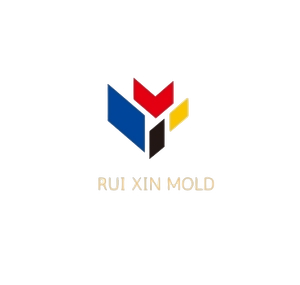Recent Posts
Tags
报错: 未找到这个表单
WHAT IS REVERSE ENGINEERING IN PLASTIC MANUFACTURING

Reverse engineering is the process of analysing an existing product to understand its design and functionality. In plastic manufacturing, reverse engineering is a common practice used to replicate products, identify flaws, and improve quality. This blog post will provide an overview of reverse engineering in plastic manufacturing, including its importance, the process, methods, benefits, applications, challenges, and best practices.
BENIFIT OF REVERSE ENGINEERING IN PLASTIC MANUFACTURING
Plastic products come in a wide variety of shapes and sizes, each with unique manufacturing requirements. Reverse engineering allows manufacturers to analyse and replicate products that may not have readily available design information, such as legacy parts or custom products. By reverse engineering these products, manufacturers can ensure consistency in the manufacturing process and improve quality. Reverse engineering is also useful for identifying design flaws and other issues that impact the product’s performance.
UNDERSTANDING THE REVERSE ENGINEERING PROCESS
The reverse engineering process involves several steps:
1 .Data collection – Gathering information about the existing product, including dimensions, materials, and manufacturing methods.
2 .3D scanning – Using a 3D scanner to create a digital model of the product.
3 .Analysis – Examining the digital model to identify its design and functionality.
4. Modification – Making any necessary changes to improve the design or functionality of the product.
5 .Manufacturing – Producing the final product using the modified design.
METHODS OF REVERSE ENGINEERING IN PLASTIC MANUFACTURING
There are several methods of reverse engineering in plastic manufacturing:
3D scanning – Using 3D scanning technology to create a digital model of the product, which can then be analysed and modified in a computer-aided design (CAD) program. This method is particularly useful for complex products with intricate geometries.
Disassembly – Taking apart the product to examine its individual components and how they are assembled. This method is useful for products with simpler designs.
X-ray or CT scanning – Using X-ray or CT scanning to create detailed images of the product’s interior components. This method is useful for products with complex internal structures.
Reverse moulding – Creating a mould of the product and then moulding a replica using the mould. This method is useful for products with simple geometries.
BENEFITS OF REVERSE ENGINEERING FOR PLASTIC MANUFACTURERS
Reverse engineering offers several benefits for plastic manufacturers:
- Improved quality – Identifying and correcting design flaws and other issues that impact the product’s performance.
- Increased efficiency – Ensuring consistency in the manufacturing process and reducing the time and cost of production.
- Replication of legacy or custom products – Replicating products that may no longer be in production or that were created for a specific customer.
- Innovation – Using reverse engineering to improve the design and functionality of existing products or create entirely new products based on existing ones.
APPLICATIONS OF REVERSE ENGINEERING IN PLASTIC MANUFACTURING
Reverse engineering can be used in various applications in plastic manufacturing:
- Product replication – Creating replicas of existing products.
- Quality control – Identifying and correcting issues with existing products.
- Product design improvement – Improving the design and functionality of existing products.
- Product innovation – Creating new products based on existing ones.
CHALLENGES IN REVERSE ENGINEERING FOR PLASTIC MANUFACTURERS
Reverse engineering also presents several challenges for plastic manufacturers:
- Limited information – Working with incomplete or outdated information about the product.
- Intellectual property issues – Ensuring that reverse engineering does not violate any patents or copyrights.
- Cost and time – The process of reverse engineering can be time-consuming and expensive.
BEST PRACTICES FOR SUCCESSFUL REVERSE ENGINEERING IN PLASTIC MANUFACTURING
To overcome the challenges associated with reverse engineering, plastic manufacturers can follow these best practices:
- Gather as much information as possible about the product before beginning the reverse engineering process.
- Use a combination of methods to ensure accuracy and completeness of the data collected.
- Involve all relevant stakeholders, including designers, engineers, and production personnel, in the reverse engineering process.
- Maintain clear documentation of the reverse engineering process, including any modifications made to the original design.
- Ensure compliance with all intellectual property laws and regulations.
- Consider outsourcing the reverse engineering process to a specialised service provider to reduce time and costs.
Conclusion
Reverse engineering is a valuable tool for plastic manufacturers looking to replicate existing products, identify flaws, and improve quality. By following best practices and using a combination of methods, manufacturers can overcome the challenges associated with reverse engineering and achieve success. As plastic products continue to become more complex, reverse engineering will become even more important in ensuring consistency and quality in the manufacturing process.
报错: 未找到这个表单
